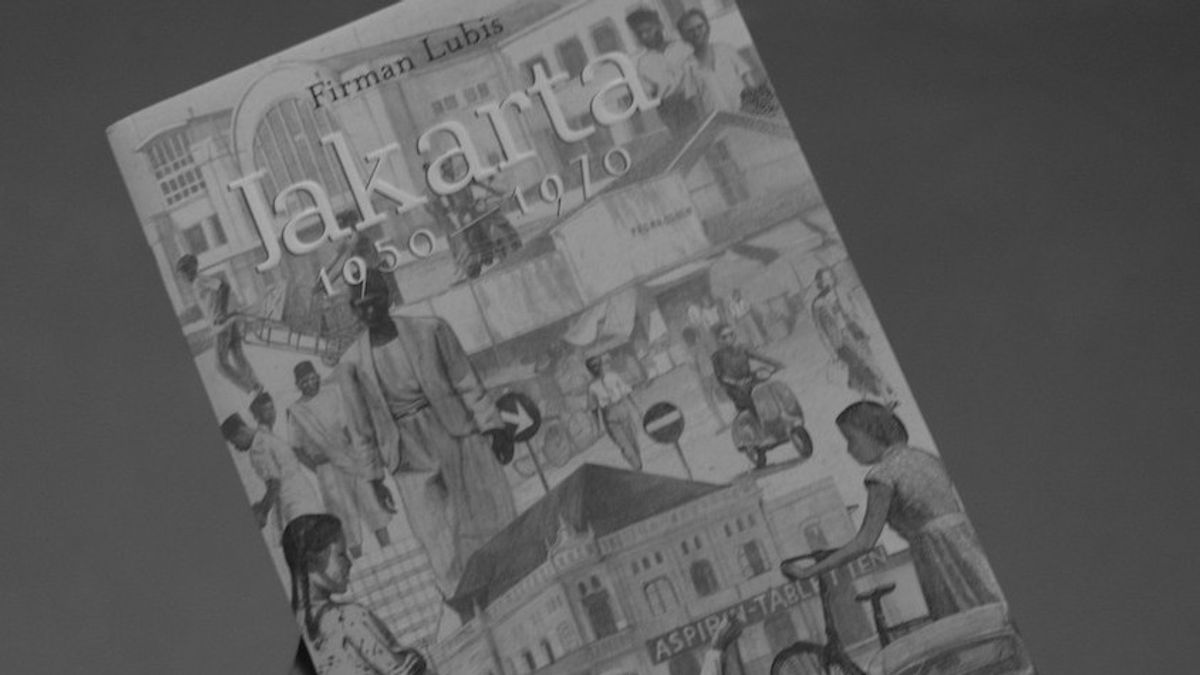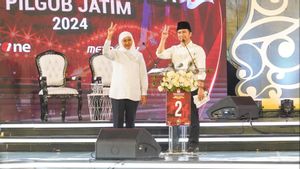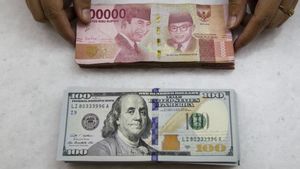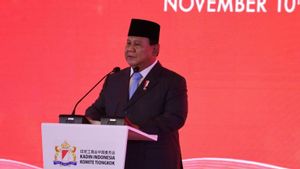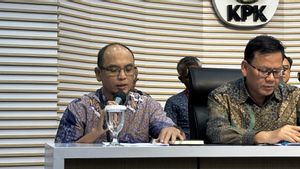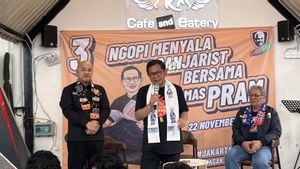JAKARTA - The contemporary generation may view Jakarta as a city with 1001 problems. Seized green spaces, marshes built by shopping centers, traffic jams and pollution have become problems for the city that was once the Queen of the East. Therefore, every current generation who wants to leave the house, open a car window, or visit a densely populated village, they will encounter these problems.
However, the problems above were not very familiar to Jakarta in the 1950s to 1970s. This has even been shown through the recorded daily journal Firman Lubis entitled Jakarta 1950-1970 (2018). In the book, Firman tries to capture his experiences so that readers can be carried away to old Jakarta, especially the problem.
Initially, the book had indeed been published separately into three books. Namely, Jakarta 1950s: Memories during Adolescence and Jakarta 1960s: Memories as Students was published in 2008. The third book is Jakarta 1970s: Memories as Lecturers which was published in 2010. However, based on the publisher's consideration, Masup Jakarta, the third book The book is then edited back into one so that it can target millennial readers.
This strategy is quite powerful. The diary, which initially wanted to be called an autobiography, actually looks attractive due to its neat and detailed storytelling. Firman, who is a medical doctor of environmental science, slowly tells about his environment, his family, his neighbors, his school, and the history of daily life of the people of Jakarta in the 1950-1970s era.
As a village boy who lives on the outskirts of Menteng, Central Jakarta, Firman does not only cover historical events. but more about the history of life of the people of Jakarta. Starting from the history of Jakarta as a multicultural city, about the rickshaw as the king of the streets, about the devil's lodge known as the Bappenas Building, to the various monuments built by Bung Karno to awaken the nationalism of the Indonesian nation.
Jakarta is a Multicultural CityIn line with what was revealed by Australian researcher Lance Castle, who called Jakarta a melting pot for the identity of Indonesian citizens. So, the Word says so too. According to him, Jakarta has long been the residence of various ethnic groups from all over the archipelago.
To strengthen his view, the owner of the paper brought back the history of Jakarta when it was still called Batavia and was led by the Governor General of the VOC, Jan Pieterszoon Coen. After Batavia was founded by Coen in 1619, various archipelago tribes were brought in by him. Some of them came by themselves, and many of them worked as workers or slaves.
"The history of the arrival of residents from outside Jakarta is evident from the emergence of various regions or villages that use the name of their ethnic origin in Jakarta, such as Kampung Melayu, Kampung Bandan, Kampung Ambon, Kampung Jawa, Kampung Makassar, Kampyng Bugis, Matraman, Kampung Bali and so on. many of whose inhabitants later merged into Betawi people, "he wrote on page 31.
Rickshaw The King of the StreetLong before the existence of the TransJakarta Bus, the favorite mode of transportation for Jakarta residents was the pedicab. During the 1950s, rickshaws became one of the most widely used public transportation for travel by the people of Jakarta. Because of its popularity, the number of becak touched 25 thousand in 1051. That is why becak can be found in almost every corner of Jakarta, so it is called the king of the streets.
"The rental price is relatively cheap, so that the rickshaw becomes the people's vehicle. To ride it, we have to bargain with the rickshaw driver. When it rains, the rental price will be more expensive, two or three times than usual, "he said on Page 75.
However, the life of the becak brothers is not in line with the increasing number of pedicabs in Jakarta. for the most part, their fate is caught in the vortex of poverty. Moreover, in general, the becak brother is not the owner of the rickshaw because he only hires a rickshaw from a businessman.
Loji Setan or the Bappenas BuildingApart from functioning as a meeting hall for the members of the Dutch East Indies Freemasonry, the Adhuc Stat Building or now known as the Bappenas Building also functions as a volksbibliothek or people's library. According to Firman, he was told about the existence of a large room in the Adhuc Stat Building in the first half of the 1950s, which was used as a library.
"It seems that the custom of opening this library is a remnant of the colonial era by private organizations. Because I really enjoy reading and this library is not far from my house, I became a member and often went to this library to read and borrow books at home, "said Firman on page 151.
Firman also explained a rule, that the number of books borrowed should not be more than three in one loan. After borrowing, Firman then read some books at Taman Suropati. The rest is continued at home. Furthermore, our library issue has discussed it more deeply through the writing "Loji Setan: Bappenas Building in the History of Archipelago Freemasonry." (https://voi.id/memori/15601/loji-setan-gedung-bapenas-dalam-sejarah-freemason-nusantara)
Monuments in Jakarta during the Bung Karno EraWhen Indonesia became independent, President Soekarno was not only focused on building infrastructure. This is because he is also involved in building a new identity for Jakarta by making statues and monuments. Some of them are the National Monument (Monas), the Welcome Statue, the Dirgantara Statue, and the West Irian Liberation Monument.
“The most spectacular monument is of course the National Monument or Monas on Jalan Medan Merdeka. The idea of building this monument was initiated by Bung Karno at the end of 1956 because it was inspired by the National Monument in Washington when he visited America at the same time, "presented on page 217.
Presumably, those are some of the things we have reviewed from this book. Even so, there are many other interesting things that we do not have time to review, such as the Family Planning (KB) program, the New Rich People (OKB) during the early days of independence in Jakarta, Hotel Des Indes, plundering at UI in the past, prostitution in Jakarta, and so on.
Finally, to commemorate the owner of the book, Firman's opinion regarding writing history can be an interesting closing. Firman said, history certainly does not always have to be written by historians only. "History can also be written by anyone who is really interested and interested in writing it from his point of view. History does not always have to be about kings, queens, statesmen, or just wars, but it is also important about the lives of ordinary people. "
Detail:
Book Title: Jakarta 1950-1970
Author: Firman Lubis
First published: 2018
Publisher: Masup Jakarta
Number of Pages: 472
The English, Chinese, Japanese, Arabic, and French versions are automatically generated by the AI. So there may still be inaccuracies in translating, please always see Indonesian as our main language. (system supported by DigitalSiber.id)
